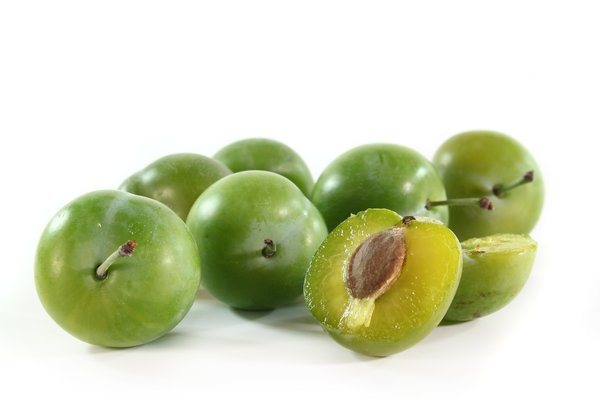Green plums, also known as unripe or sour plums, offer a unique and tart flavor that can be enjoyed in various culinary applications. When selecting green plums, it’s important to consider factors such as appearance, firmness, ripeness, and intended use to ensure you make the best choice. Here’s a comprehensive buyer’s guide to help you select the perfect green plums:
- Color and Appearance: Look for green plums with a vibrant and uniform green color. The skin should be smooth and free from blemishes, discolorations, or wrinkles. Avoid plums that have patches of yellow or other colors, as these may indicate over-ripeness or poor quality.
- Firmness: Green plums should be firm to the touch. Unlike fully ripe plums, they shouldn’t give much when gently pressed. Avoid plums that feel too soft or mushy, as they might be overripe.
- Size and Shape: Choose green plums that are relatively uniform in size and shape. This can indicate consistent ripening and better quality.
- Intended Use: Green plums are often used for making preserves, pickles, chutneys, and other recipes where their tartness is desirable. If you plan to consume them fresh, select slightly firmer green plums for a crunchy and tangy experience.
- Aroma: Unlike ripe plums, green plums don’t typically emit a strong aroma. However, if you detect any unpleasant odors, it’s best to avoid them.
- Seasonality: Green plums are usually available during the early summer months, depending on your region.
- Culinary Purposes: If you’re buying green plums for cooking or preserving, slightly underripe ones are preferred as they will hold their shape better during cooking processes.
- Local and Organic Options: Whenever possible, opt for locally grown green plums to ensure freshness and support local farmers. Consider choosing organic green plums if you’re concerned about pesticides and want a more environmentally conscious option.
- Quantity: Depending on your intended use, you might want to buy green plums in larger quantities for preserving or pickling projects.
- Storage: Green plums can be stored at room temperature for a short period to encourage ripening, but they will generally remain firm and tart. If you want to slow down the ripening process, place them in the refrigerator.
- Taste Testing: If you’re new to green plums, consider buying a small quantity to taste test before purchasing in bulk.
By considering these factors, you’ll be better equipped to choose the right green plums for your culinary endeavors. Whether you’re creating tangy condiments, experimenting with new recipes, or simply enjoying their unique flavor, green plums can be a delightful addition to your kitchen.
